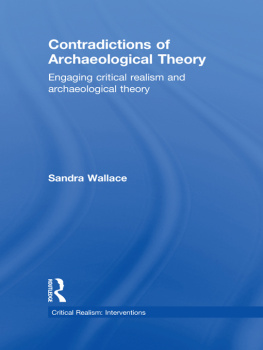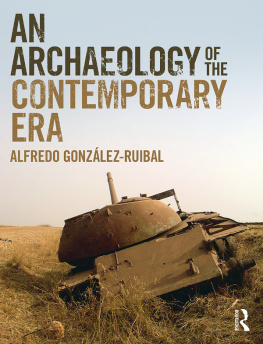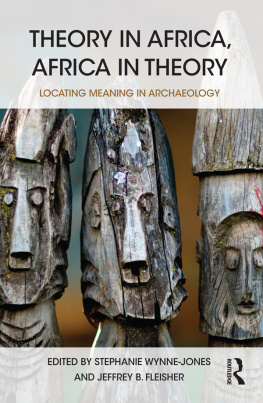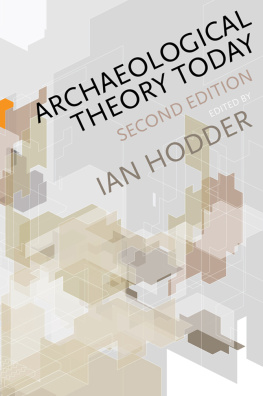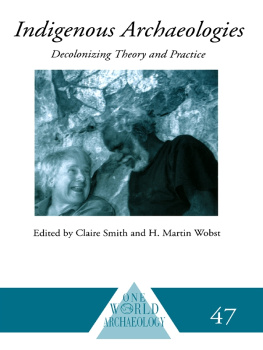Contradictions of Archaeological Theory
Is current archaeological theory stuck at an impasse?
Sandra Wallace argues that archaeological theory has become mired as a result of logical and ontological contradictions. By showing that these contradictions are a result of common underlying philosophical assumptions and fallacies this book is able to show how a fresh approach to this discipline is necessary to resolve them, even if this requires re-examining some of the tenets of orthodox archaeology.
This fresh approach is achieved by using critical realism as an underlabourer to philosophically evaluate archaeological theory. Starting by assessing the historical impact of philosophy on the discipline and then looking at the current relationship between archaeology and the ontology of the material, this book facilitates the construction of discipline specific theory by archaeologists. The result is an approach to archaeology that allows both students and practitioners to free themselves from endemic contradictions and rediscover their approach to archaeological theory.
Sandra Wallace is currently a research affiliate at the Department of Archaeology, University of Sydney, Australia, and the Principal Archaeologist for Artefact Heritage Services. Sandras research interests are archaeological theory, philosophies of materiality, critical realist theory and Australian Aboriginal archaeology.
Acknowledgements
There have been many individuals who have been invaluable in their support, either academically, or in other important ways. I would like to acknowledge those who have inspired me intellectually, especially Neville Spencer who introduced me to critical realism. Thank you to Roland Fletcher who supervised the thesis on which this book is based. I am also grateful to those who have offered their time to discuss and proofread the contents of this book and the preceding thesis, including Geoff Bailey, Alan Norrie, Brian Pinkstone, Catherine Wu and Robyn Lonergan. Also thanks to the anonymous reviewers whose suggestions were helpful and insightful, but of course any errors remain my own.
On a more personal note, I would like to thank those close to me. My family and friends, especially my mother Terry-Anne Wallace, and my friend Serena Iurincich have always encouraged me and I thank them for that. Finally, Grant Warner, who I would like to thank for his patience, care and unwavering support.
Critical realism: interventions
Other titles in this series:
(Mis)recognition, Social Inequality and Social Justice
Nancy Fraser and Pierre Bourdieu
Edited by Terry Lovell
After International Relations
Critical realism and the (re)construction of world politics
Heikki Patomki
Being and Worth
Andrew Collier
Beyond East and West
Roy Bhaskar
Capitalism and Citizenship
The impossible partnership
Kathryn Dean
Critical Realism and Marxism
Edited by Andrew Brown, Steve Fleetwood and John Michael Roberts
Dictionary of Critical Realism
Edited by Mervyn Hartwig
A Social Theory of the Nation-State
The political forms of modernity beyond methodological nationalism
Daniel Chernillo
Rethinking Marxism
From Kant and Hegel to Marx and Engels
Jolyon Agar
Transcendence
Critical Realism and God
Margaret S. Archer, Andrew Collier and Douglas V. Porpora
Contradictions of Archaeological Theory
Engaging critical realism and archaeological theory
Sandra Wallace
1 Introduction
Archaeology is a discipline concerned with depth. We dig deep into the ground to uncover material remains, and we investigate great time depths. Theoretically the discipline has not matched this relationship with the deep. The debates and discussions of theoretical archaeology have primarily resided on the surface, unable to reach below the superficiality of epistemological investigation. In order to reach its full potential as a discipline it is necessary for archaeology to look below that surface and uncover the possibilities of a depth ontological perspective that allows the investigation of underlying reality from an archaeological viewpoint.
The explicit aim of this book is to argue that archaeologys focus on epistemology and method has resulted in a distraction from the main theoretical issue of the discipline, which is that a fallacious inherent ontology exists within the theoretical constructs of archaeology. As a result, logical (and ontological) contradictions have become embedded within the discipline, affecting questions of interpretation and ultimately also of practice. The theorisation of the material, time, scale and uniformitarianism in archaeology are shown to contain these contradictions. This aim is facilitated by the use of critical realism as an underlabourer to critique the philosophical positions that form the basis of the spectrum of archaeological theory. A secondary aim is, therefore, the identification of points of engagement between critical realism, as an advocate of a realist depth ontology, and archaeological theory, as a discipline that studies the material in the context of human action and large temporal spans. An arena of this engagement is the theorisation of the material as an ontologically emergent entity. This proposal has implications for a deeper critique of archaeological theorising, and also for new ways forward for archaeology and critical realism. The engagement redefines both. Rather than critical realism representing yet another borrowed tool of explanation, it is instead a tool of inquiry into the nature of archaeology, and its own premises gain new insight from archaeological perspectives on materiality.
The incorporation of ontological absence into archaeological theorising is also suggested, a position that has not previously been put forward. Indeed the absence of an archaeological theorising on absence is one of the indicators of the ontological conundrum that lies beneath the focus on epistemology and superficial observables. In summary, the arguments of this book are on two main fronts: the analysis and explication of the current theoretical state of the discipline, and the proposal of a new ontological perspective on the theorisation of the material for both archaeology and critical realism, incorporating ontological absence, relational scale and emergence.
Philosophical principles and issues regarding the phenomena of materiality over time form the basis of this discussion. The focus will not be on empirical investigation of these issues, despite employing some existing proposals about that empirical condition in its arguments. Minor case studies and examples are furnished throughout the discussion, although it is envisaged that archaeologists can strengthen the engagement of critical realism and archaeological theory by identifying methodological potentialities, and practical applications that will further entwine the two.
Structure of the book
The argument of this book is presented as follows. Following this introduction, demonstrates that the practice of archaeology presupposes fundamental theoretical assumptions. Whether its form is explicit or implicit, theory provides an essential foundation for the practice of archaeology from the act of excavation to the complex process of interpreting material remains. Theory is underpinned by philosophical principles, which by their very nature serve as guides for the understanding of reality. This chapter highlights the basic structure of philosophical inquiry, particularly the differentiation between ontology (theory of being) and epistemology (theory of knowledge), and the implications of their different functions within philosophy and by extension, archaeology. The three theoretical positions of processual, contextual and symmetrical archaeologies are introduced and examined in relation to their historical development within the broader theoretical context of the discipline.

